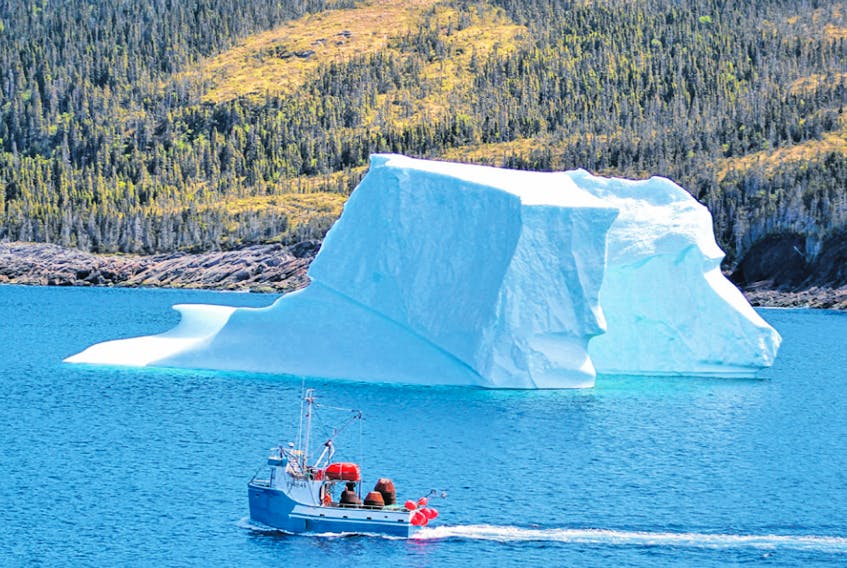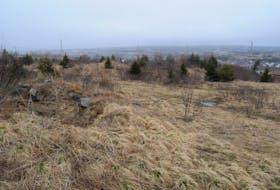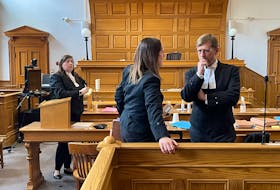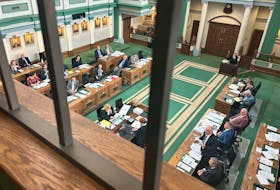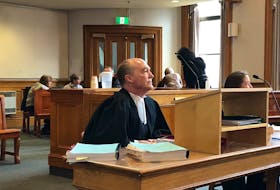ST. JOHN'S, N.L. — There are a couple of notions about the seasons in Newfoundland and Labrador.
One suggests there are times when you can find yourself experiencing all four in the span of a single day because of the unpredictable weather.
The other says there are really only three seasons in Newfoundland and Labrador — summer, fall and winter, with spring nothing more than a milder variant of the season that proceeds it.
For tourism operators, the modus operandi for a long time was to get all they could out of the summer season, otherwise they'd be left fighting for whatever business they could scrounge up beyond that. That said, there have been signs of life for the industry when it comes to building a tourism economy that extends beyond the peak summer season.
John Norman has seen it first hand. The mayor of Bonavista wears a lot of hats. He is president of the Bonavista-Trinity Regional Chamber of Commerce and is involved in two companies — Bonavista Living and Bonavista Creative — that drive heritage restoration and socioeconomic development. He views tourism as a key player in the regional economy. The chamber completed a study two years ago that identified tourism as the third-largest sector on the peninsula, and Norman says he wouldn’t be surprised if it moved up to the second slot within the next five years, leapfrogging over the fishery.
"Currently the second-largest sector is the fishery, which of course isn't growing, while tourism is steadily growing," he told The Telegram in a recent interview.
Seasons change
Norman reckons that eight to 10 years ago, the tourism season in the Bonavista-Trinity area was about three months long, plus a week or two. Over time, it grew into a four-month season.
"Now we're approaching about a five-month season, and our goal would be to have a strong six-month season, with even some growth on the shoulders of the six-month season," Norman said, noting the chamber's current strategy aims for a six-month tourism season by 2022.
The value of tourism for the Bonavista-Trinity area as of 2018 was approximately $42 million, and Norman says the opportunity for further growth is realistic. The chamber has a regional tourism committee creating ways to extend the season by generating off-season interest and strengthening not-for-profits engaged in theatre productions, arts programming, historical and cultural tours, and other endeavours.
"We've been working as a region for many years with the provincial government on extending the season and maintaining an extended season for the five provincial historic sites within the region," Norman said, when asked what actions have helped the region reach a five-month season.
This year, Parks Canada agreed to keep its local sites open throughout September instead of closing after the Labour Day weekend.
Not-for-profit groups have played a role, too, with special events, festivals, improved peak-season offerings and extended-season activities, Norman says.

This all helps the people offering accommodations for visitors, and local restaurants.
"I think what's really also played a major role is the fact we've had a lot of businesses open up in the region that are certainly positively impacted by the tourism sector," he said.
"They are year-round operations that have become destination businesses. These are specialty manufacturers and exporters. The Port Rexton Brewery would be a good example. The Newfoundland Salt Company, East Coast Glow bath and body products ... this allows a guarantee to the visitor in October, November or when we have visitors — usually provincial-based visitors — in the winter. There are still some places to go and some points of interest."
Unique attractions
The Bonavista Peninsula is one part of a big region Legendary Coasts looks after. The destination marketing organization also serves the Burin Peninsula and most of the Avalon, with the exception of the St. John's metro area, and in recent years has built a strong relationship with the French territory of St-Pierre-Miquelon.
Kathi Stacey is the executive director of Legendary Coasts and has been with the organization since its inception in 2010.
"I've seen the season extend on both sides of the summer season," she said. "I've seen it grow from a season that starts in the middle of June or end of May to starting earlier and earlier, even April now. We're still seeing tourists visit this province this time of year. ... Our typical season now is from April till the end of October or early November."
She cites the unique attractions the province has to offer — icebergs (which have lately appeared along shorelines earlier in the year), whales, hiking trails and its natural geographic features — as big drawing points for most travellers.
"I think the expansion of the season is directly related to the expansion of our products and the experience we have to offer," Stacey said, adding she has received amazing feedback from travellers who have been all over the world in addition to coming to Newfoundland and Labrador.
"I think we, as resident Newfoundlanders, sometimes take it all for granted, but when you have a visitor coming here and seeing it through their eyes, it really is an eye-opener for all of us."
Economic generator
The Department of Tourism identifies tourism in Newfoundland and Labrador as a $570-million industry (that figure only accounts for non-resident tourists), with approximately 2,600 businesses having a stake in it.
"We've focused on investing in some festivals and events that are encouraging tourism during those shoulder periods," Tourism Minister Bernard Davis told The Telegram.
He says it's important to keep seasonal attractions open longer in order to extend the season.
"The only way they are going to expand their operations is if people want to be here, and it's sort of a catch-22 — you've got to make sure the operators are open to attract the people and make sure they come. But when they get here, if they see that things are closed, then that's not a positive experience for them as well."
Larry Laite chairs the board of directors of Hospitality Newfoundland and Labrador and is the revenue strategist for Steele Hotels.
"Our summer business, I won't say it takes care of itself, but it kind of does take care of itself because of the nicer temperatures and whales. People are coming. So, we need to attract in times when the whales aren't here and the weather isn't so nice."
Like Davis, Laite sees lots of potential in the various festival and events popping up outside of the peak summer season, noting most have come into existence only within the last few years.
Among those is the Iceberg Alley Performance Tent, a multi-day concert series moving from St. John's to Mount Pearl in 2020 that's held in September (the Brigus Production Company, which stages Iceberg Alley, and Steele Hotels share the same president, John Steele).
"Everybody knows the George Street Festival does well, because it's the summer," Laite said. "So, if we can be successful in getting Roots, Rants and Roars, Gros Morne Fall Fest, Cain's Quest, Iceberg Alley, a bunch of these things taking place, then it's going to encourage people to staycation or new people to come to the province."
Similar to the need for attractions to remain open to help the shoulder seasons, Laite believes visitor information centres need to keep their doors open beyond Labour Day to let tourists know what's happening in the fall.
Labour issues
There can be labour challenges that come with an extended tourism season, particularly when students who are hired for the summer have to leave by the end of August to go back to school.
"If the shoulder season became so strong that visitor volume was high enough to need multiple staff at the sites, that would create a challenge for some of the not-for-profit sites," John Norman acknowledged.
Labour in general has been a challenge, and even with a lot of young people moving to Bonavista — a fact Norman can attest to as mayor — it can be difficult finding people to fill jobs. The restaurant industry is one area in need of workers, and Norman is hopeful the launch of a two-year culinary program at the College of the North Atlantic campus in Bonavista will help. He says it could have been filled twice-over this fall given the number of students who applied. There are discussions, too, of getting a heritage carpentry program at the local campus.
"There's all sorts of opportunity to bring in and train for the growing sector, and at the same time, fill voids in the service industry by having a more robust college system in some parts of Newfoundland, especially those that are seeing labour shortages that could utilize students," Norman said.
In his previous portfolio handling Advanced Education, Skills and Labour, Davis headed a department that explored employment opportunities for youth and seniors. He suggests the latter demographics may be able to help with labour issues arising in the shoulder seasons.
"It's an opportunity where we see some seniors want increased employment or another job on a part-time basis," Davis said. "We have an aging demographic in this province, and a lot of people like the idea of working when they want to in the off-peak seasons … which could fill a very big void that we have in those operations when the students do go back to school."
To reach the regional chamber's the six-month-season target, Norman views hiking trail enhancements as a key component along with the 14-year effort locally to create a UNESCO Global Geopark. UNESCO evaluators visited the Bonavista area this summer. An official announcement on the project's future is expected next spring.
This fall, in particular, has been a good one for attracting outdoor enthusiasts, he added.
"We've had many hikers and geotourists in the region over the past few weeks looking at those assets, hiking those trails and taking advantage of some of those sites and accommodations and restaurants that either now choose to stay open year-round or at least have an extended season."
[email protected]
Twitter: @CBNAndrew
Getting tourists to N.L.
Whether or not there are events or destinations to entice visitors to Newfoundland and Labrador, they’ll need to find a way to get there.
For the island portion of the province, it’s either plane or boat. Marine Atlantic’s commercial traffic tends to be consistent year-round, but passenger volume really picks up in the summer, with numbers for July and August alone accounting for approximately 45 per cent of all passenger traffic for the year.
Marine Atlantic has tried a variety of campaigns in recent years to increase passenger traffic, including bundle discounts, kids-travel-free promotions, gas card offers and passenger discounts. Earlier this fall, it offered a 50 per cent discount on bookings for voyages from Oct. 1-Nov. 15.
"Each one of our discount campaigns was designed to better understand the booking preferences of our customers," a Marine Atlantic spokesman told The Telegram in a statement. "This fall discount campaign was designed to test a shoulder season discount and understand if it changes customer travel behaviour to generate new business and build traffic volumes during a period of available capacity."
Research indicates most passengers using the Marine Atlantic ferry service in the fall are residents of Newfoundland and Labrador and Nova Scotia, with Ontario the third most common home province. Usually, they're visiting family and friends.
"While the travel period for the discount does not end until Nov. 15, our initial review of the booking data indicates a positive increase in the number of year-over-year bookings in comparison to the same timeframe last year," the spokesman said.
Air travel to Newfoundland primarily comes through St. John's International Airport. Kathi Stacey of the destination marketing organization Legendary Coasts said the lack of direct international flights to the island has hurt the tourism industry.
"Accessibility to Newfoundland as an island has always been a challenge, with the cost of getting to this province (and) with the lack of direct international flights that come to Newfoundland" she said.
In general, it has been a down year for flights at the airport in St. John's.
Based on data covering January to August, total passenger numbers for 2019 thus far are the lowest for the last six years when compared to the same months from 2014-18. January-to-August numbers for 2019 were down 3.6 per cent compared to the same months in 2018, and overall passenger numbers declined in both 2017 (1,533,355) and 2018 (1,507,582) compared to the previous year. The airport served 1,568,950 passengers in 2016.
Festivals and events extending N.L.'s tourism season
• Trails, Tales and Tunes in Norris Point (May)
• Iceberg Festival in St. Anthony (June)
• Songs, Stages and Seafood in Bay Roberts (May)
• Gros Morne Fall Fest in Cow Head (September)
• Unscripted Digital Arts Festival in Twillingate (September)
• Roots, Rants and Roars in Elliston (September)
• Mid-Winter Bivver in Central (February)
• Eat the Hill in Clarenville (January)
• Cain’s Quest snowmobile race in Labrador (March)

